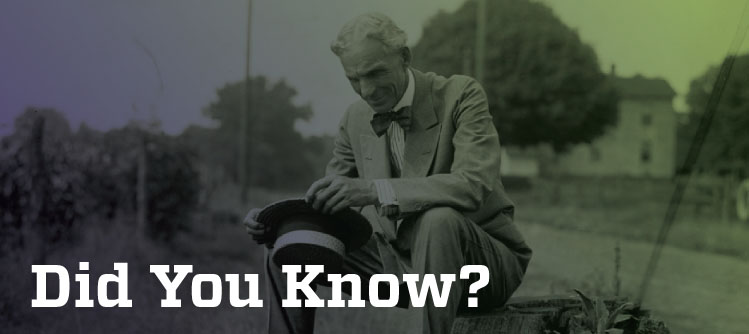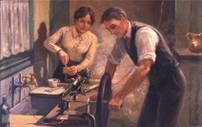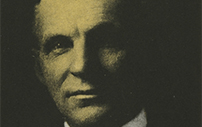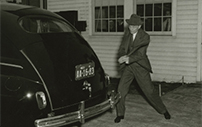 |

![]()
Henry Ford was a complex and at times, contradictory personality with a wide range of interests and strongly held opinions. You probably know about Ford's achievements in automobile production, but...
As a child, he was inspired by his mother, who encouraged his interest in tinkering.
His father was a farmer. He encouraged Henry’s interest in the use of machines on the farm.
He was inspired by steam-powered tractors when he was a teenager. This made him think about the way things work.
He was fired from his first job.
Henry built his first gasoline engine at home and tested it in the kitchen. He mounted it on the kitchen sink.
Thomas Edison was Henry Ford’s role model and later his close friend.
He built and drove race cars early in his career to demonstrate that his engineering designs produced reliable vehicles.
He failed with his first two companies before he succeeded with Ford Motor Company.
The idea for using a moving assembly line for car production came from the meat-packing industry.
He financed a pacifist expedition to Europe during WWI.
He adopted a paternalistic policy to reform his workers' lives both at home and at work.
He was an unsuccessful candidate for the United States Senate in 1918.
He owned a controversial newspaper, The Dearborn Independent, that published anti-Jewish articles which offended many and tarnished his image.
He promoted the early use of aviation technology.
Henry Ford built Village Industries, small factories in rural Michigan, where people could work and farm during different seasons, thereby bridging the urban and rural experience.
He sought ways to use agricultural products in industrial production, including soybean-based plastic automobile components such as this experimental automobile trunk.
He was one of the nation's foremost opponents of labor unions in the 1930s and was the last automobile manufacturer to unionize his work force.
Ford mobilized his factories for the war effort and produced bombers, Jeeps, and tanks for World War II.
He established schools in several areas of the country that provided educational experiences based on traditional one room school techniques, modern teaching methods, and "learning through doing".
He established an indoor/outdoor museum--The Henry Ford--to preserve historical items that illustrated the American experience and American ingenuity.
 |
Henry and Clara Ford in 1893 |
 |
Henry Ford and Spider Huff with |
 |
Campaign Brochure, "Henry |
 |
Henry Ford Hitting Soybean |
Copyright © 2013 20900 Oakwood Blvd., Dearborn, MI Call Center: 313.982.6001 or 800.835.5237 |